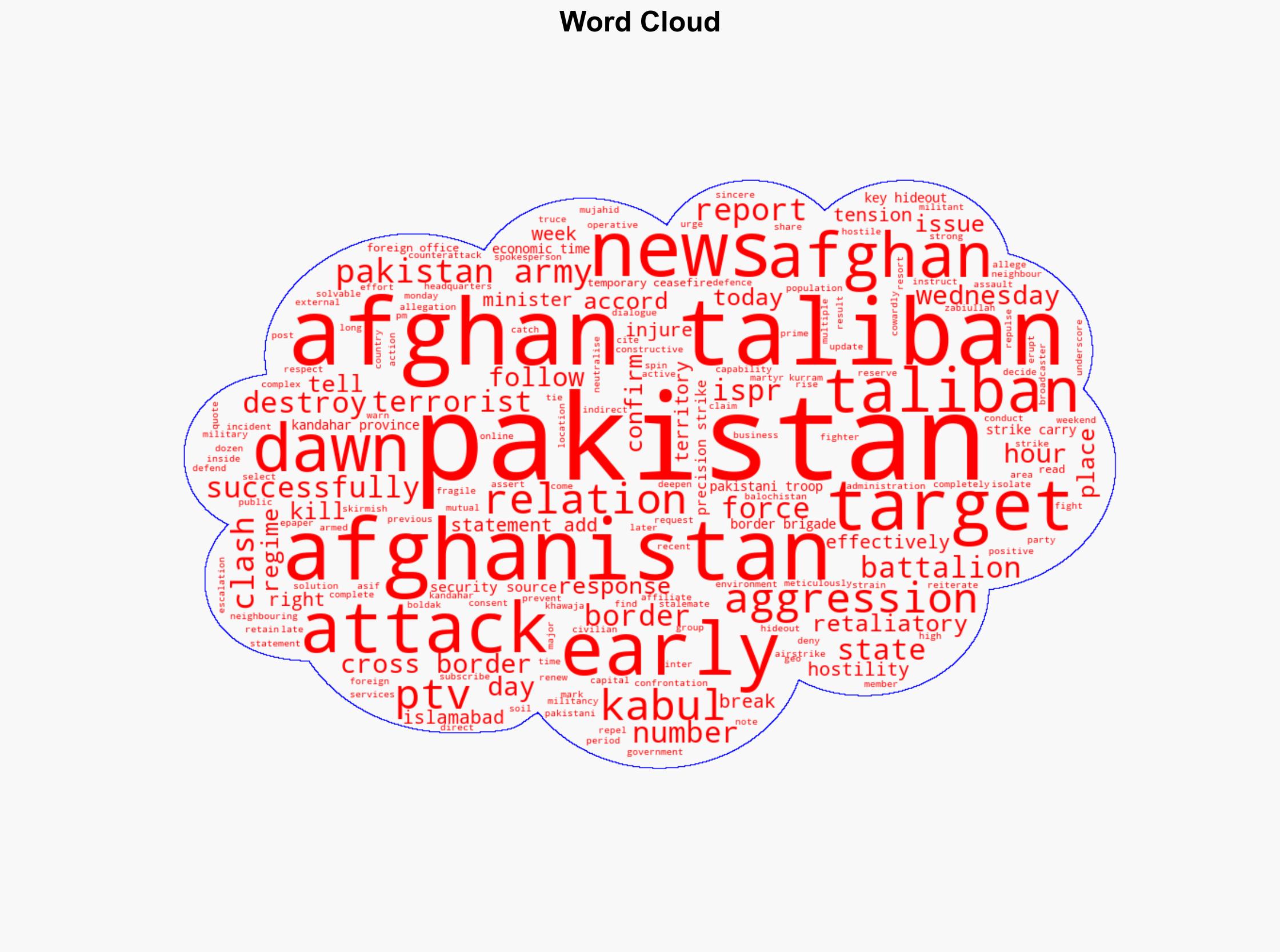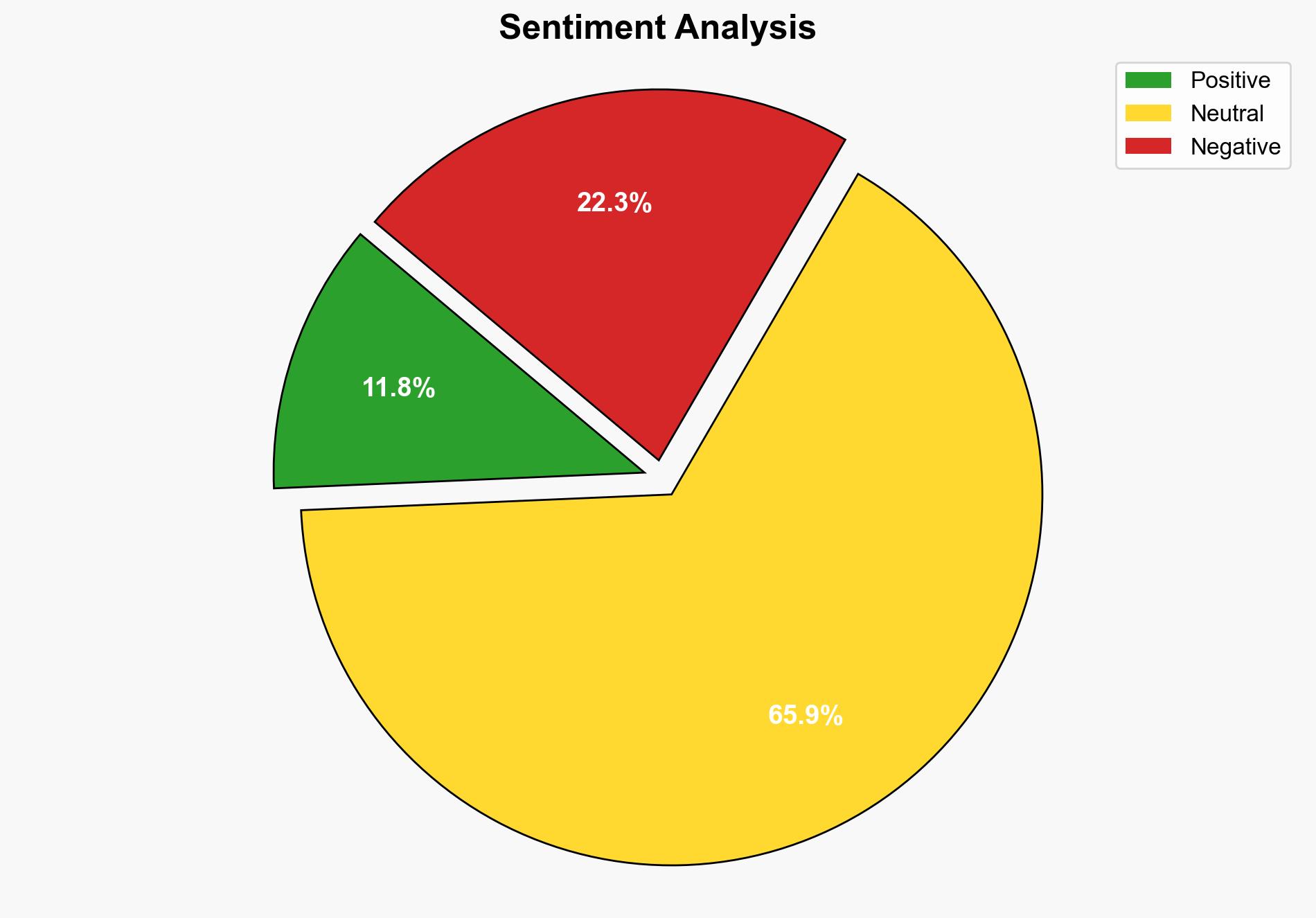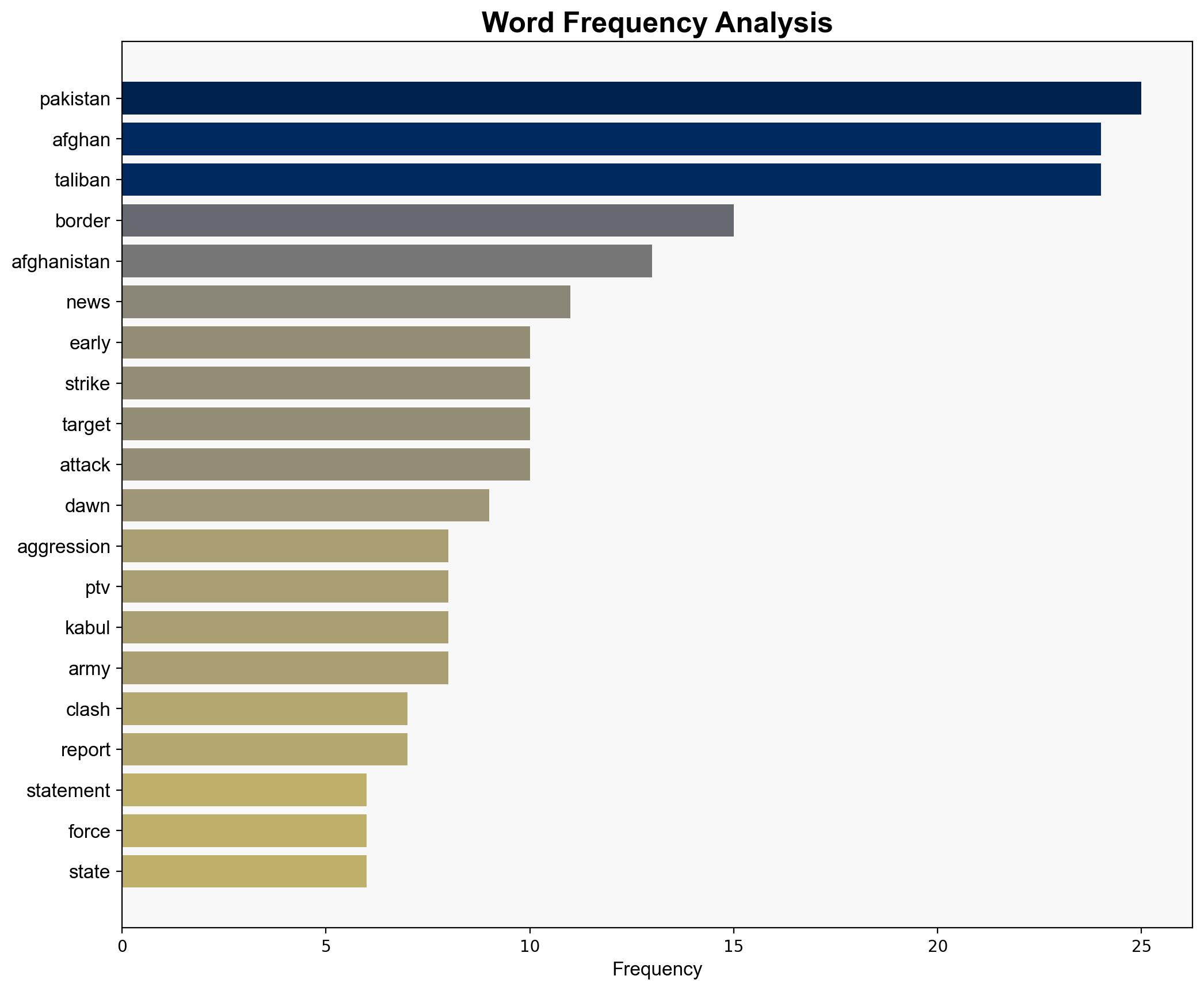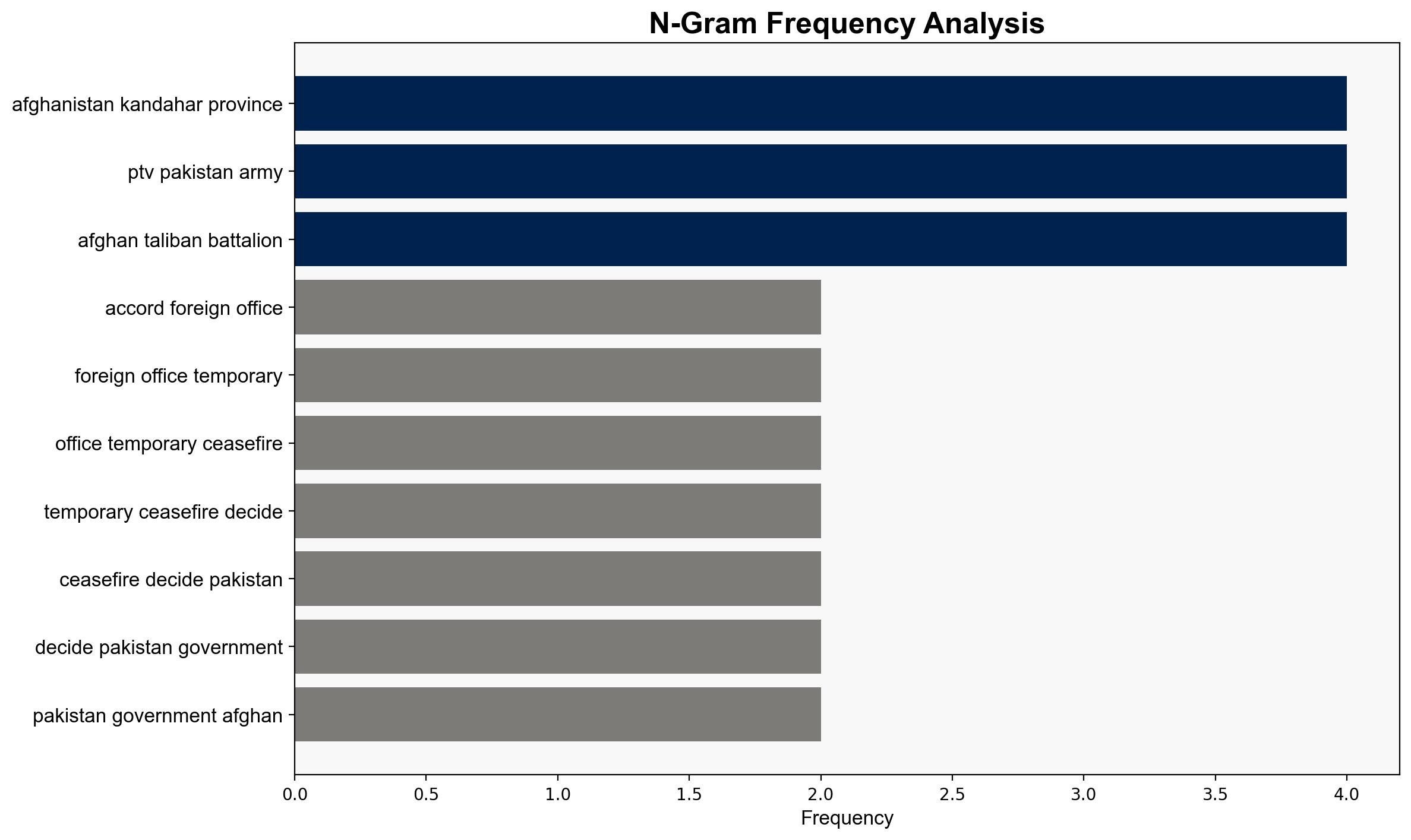Pakistan Afghanistan agree to 48-hour ceasefire after deadly border clashes – The Times of India
Published on: 2025-10-16
Intelligence Report: Pakistan Afghanistan agree to 48-hour ceasefire after deadly border clashes – The Times of India
1. BLUF (Bottom Line Up Front)
The temporary ceasefire between Pakistan and Afghanistan, following intense border clashes, indicates a fragile but critical pause in hostilities. The most supported hypothesis suggests that both parties seek to de-escalate tensions to avoid further military and diplomatic fallout. Confidence level: Moderate. Recommended action: Encourage diplomatic engagement and monitor compliance with the ceasefire to prevent further escalation.
2. Competing Hypotheses
Hypothesis 1: The ceasefire is a genuine attempt by both Pakistan and Afghanistan to de-escalate tensions and prevent further military conflict. This hypothesis is supported by mutual consent for the ceasefire and statements indicating a desire for constructive dialogue.
Hypothesis 2: The ceasefire is a tactical maneuver by one or both parties to regroup and prepare for further military action. This is suggested by ongoing military activities and retaliatory strikes reported just prior to the ceasefire agreement.
Using ACH 2.0, Hypothesis 1 is better supported due to the explicit mutual consent and diplomatic language used by both parties, indicating a preference for dialogue over continued conflict.
3. Key Assumptions and Red Flags
Assumptions include the belief that both parties are acting in good faith and that the ceasefire will hold. A red flag is the lack of independent verification of military actions and casualties, which could indicate biased reporting or misinformation. The absence of detailed third-party mediation efforts is also notable.
4. Implications and Strategic Risks
If the ceasefire fails, there is a risk of renewed hostilities, which could destabilize the region further. The conflict could spill over into broader geopolitical tensions, impacting regional security and economic stability. Continued border skirmishes may also strain Pakistan’s internal security and diplomatic relations with other neighboring countries.
5. Recommendations and Outlook
- Encourage sustained diplomatic dialogue between Pakistan and Afghanistan, possibly facilitated by a neutral third party.
- Monitor compliance with the ceasefire through international observers to ensure transparency and accountability.
- Scenario-based projections:
- Best Case: Ceasefire leads to long-term peace talks and resolution of border disputes.
- Worst Case: Ceasefire collapses, leading to intensified military conflict and regional instability.
- Most Likely: Temporary reduction in hostilities with periodic skirmishes as underlying issues remain unresolved.
6. Key Individuals and Entities
Zabiullah Mujahid (Afghan Taliban spokesperson), Khawaja Asif (Pakistan’s Defense Minister)
7. Thematic Tags
national security threats, regional focus, border conflict, ceasefire, diplomatic engagement





